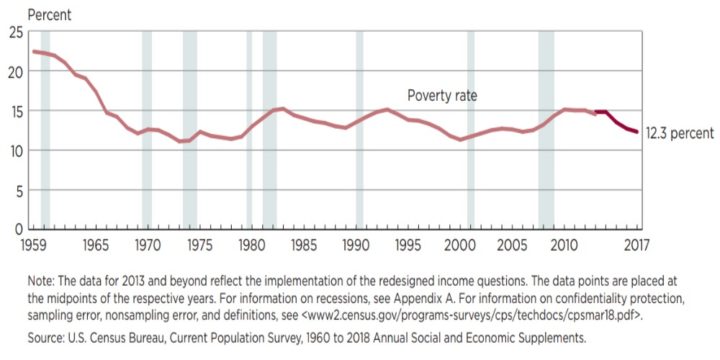One final piece to our conceptual map of Pagosa Springs, during March 2021… during the rollout of a new vaccine… during an active Spring Break season at Wolf Creek Ski Area. As we try to make sense of a topsy-turvy economy…
I’ve left a number of huge blank spaces in this conceptual map — probably as big as the blank spaces on some of the world maps of the 1500s.
But I don’t want to leave ‘education’ completely off the map. So today, a quick look at that particular ‘continent’.
NOTE: I currently serve on the Board of Directors for Pagosa Peak Open School, the only District-authorized charter school in Archuleta County. The opinions expressed here are mine, and do not necessarily reflect the opinions or policies of the PPOS board, staff, or school community.
The education of K-12 students is our most expensive local undertaking, in terms of Archuleta County taxpayer contributions. The Pagosa Springs Medical Center has a larger annual budget than the Archuleta School District, but only about $1.3 million of PSMC’s projected $51 million budget comes from local taxes. ASD, meanwhile, gets about $8.2 million from local property taxes. When all forms of revenue are included — including state and federal funds, and other sources — the School District will spend about $25 million this year educating about 1,599 students.
About half the ASD students (51%) meet the federal guidelines for Free & Reduced Lunch (FRL). Last October, Secretary of Agriculture Sonny Perdue announced that the US Department of Agriculture (USDA) would allow for free meals to continue to be available to all children — all children, not merely those qualifying for FRL — throughout the entire 2020-2021 school year.
From an October 9, 2020 USDA press release:
This unprecedented move is part of USDA’s unwavering commitment to ensuring all children across America have access to nutritious food as the nation recovers from the COVID-19 pandemic.
“As our nation recovers and reopens, we want to ensure that children continue to receive the nutritious breakfasts and lunches they count on during the school year — wherever they are, and however they are learning,” said Secretary Perdue. “…I appreciate President Trump for his unwavering commitment to ensuring kids receive the food they need during this pandemic and for supporting USDA in continuing to provide these unprecedented flexibilities.”
We’ve struggled, here in the US, to put an end to poverty — and malnutrition — since at least… well, forever, I guess. This chart from Wikipedia gives a sense of our national progress between 1959 and 2017:
Try as we might (and fudge with the numbers as we might) the richest nation in the world’s history has been unable to reduce the percentage of impoverished families below the 10% mark. A relatively large proportion of those impoverished families are raising children.
Where childhood poverty is concerned — and childhood malnutrition — public schools have been instrumental, since the 1960s, in providing at least one daily meal for low-income school-age children. Whether all of those meals would qualify as “nutritious” has been an ongoing controversy. My point being, schools in 2021 are not only about education; they’re also about food security.
One of the schools serving ASD students is the Pagosa Peak Open School (PPOS), the District-authorized, tuition-free, K-8 charter school operating in the former Parelli Building near Walmart. When the school founders were writing the charter application back in 2016, they specified that the school would put an emphasis on healthy nutrition. But charter schools operate at a financial disadvantage here in Colorado — due to their smaller size and independently-funded facility costs — and PPOS did not have a full-fledged school lunch program until last year.
The USDA’s COVID-based decision to provide breakfast and lunch funding for all students, in all schools, helped to finally make a robust nutritional program possible at PPOS.
The next big project for PPOS will be upgrading its former office building with the improved ventilation and security features expected in a public school in 2021. The school has begun a Capital Campaign aimed at funding $1.3 million in building repairs and improvements. (If you would like to help with the funding effort, contact the school director, Angela Reali-Crossland at areali@ppos.co
School enrollment in our Archuleta County district had been on an upward trajectory in recent years, after declining somewhat during the Great Recession. The pupil membership in 2012 was 1,371… but had increased to 1,742 by 2019, thanks in part to a large influx of students from the Jicarilla Apache reservation in Dulce, New Mexico.
Then the COVID pandemic caused all Colorado schools to switch to “distance learning” last March. ASD schools opened in September under a “hybrid” model, with kids attending in-person only two days per week, and doing ‘distance learning’ from home the other three days. (PPOS — because of its less-crowded facility — was able to offer in-person classes five days a week, although they also provided a distance learning option for families that preferred to study at home.)
We don’t know if the decision to move to “hydrid” education discouraged some families from returning their kids to school — or if some families had moved away? We only know that District enrollment, which had been at 1,742, dropped to 1,599 by October 2020. That includes the PPOS students.
As Thanksgiving approached and the COVID infection rate began to spike in Archuleta County, ASD and PPOS switched to all-distance-learning, to try and get safely through the holidays. Schools reopened in January with in-person classes. (Pagosa Springs High School students returned under a hybrid model in January.)
A few years back, ASD hired a demographer named Shannon Bingham — the owner of Boulder-based Western Demographics, and something of an expert on school enrollment projections — to project District enrollment through the year 2021.
He predicted enrollment growth of 352 students, for a total of about about 1,920 students in the 2021-2022 school year.
To quote some wording from Mr. Bingham’s Power Point slide:
“Approximately 352 additional students (medium scenario) are expected during the next five years (including district sanctioned charter schools) as the positive economy continues and families continue to find the Pagosa area an attractive location to raise a family.”
Projections of populations are problematic, of course, even if you’re an expert. Pandemics happen unexpectedly. Housing prices head for the stratosphere. The community gets rocked by an explosion of residential homes converted to VRBO and Airbnb rentals.
It appears Mr. Bingham missed the mark by 320 students.
We can try and guess how that happened. But we don’t know for sure.


